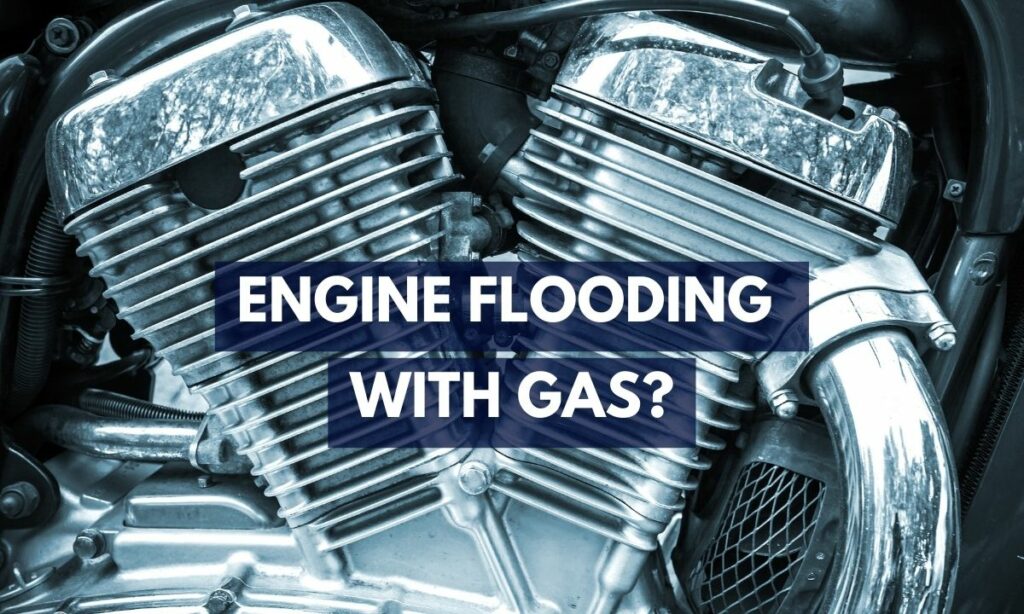Engine flooding is one of the problems that lead to your motorcycle not starting.
The one time I had my bike flooded, it was a headache I didn’t want to deal with again.
By flooding, we are referring to the engine flooded with gas. Not water or rain here.
So what to do if the motorcycle engine is flooded with gas?
First, try resting the motorcycle for half an hour and then start.
If resting doesn’t work, cut the fuel supply, remove the spark plug, and crank the engine to drain the excess fuel out.
Once the fuel is drained out of the engine, the motorcycle should start.
To prevent the flooding from happening again, inspect the spark plug, ignition coil, and choke lever position.
That’s the gist.
Let’s get down to the details.
What exactly is engine flooding
Put simply, engine flooding is when the engine combustion chamber has too much fuel in it that the engine is not able to start.
The engine is running on a rich fuel mixture.
Too much fuel, too little air.
Essentially, the engine is flooded with too much gas to the point of not being able to start.
Hence, the name – engine flooding.
People also use flooding to refer the water flooding in times of excessive rain. The motorcycle is submerged in water – either completely or partially.
To keep things simple, the flooding we refer to in this post strictly refers to the engine flooding with gas.
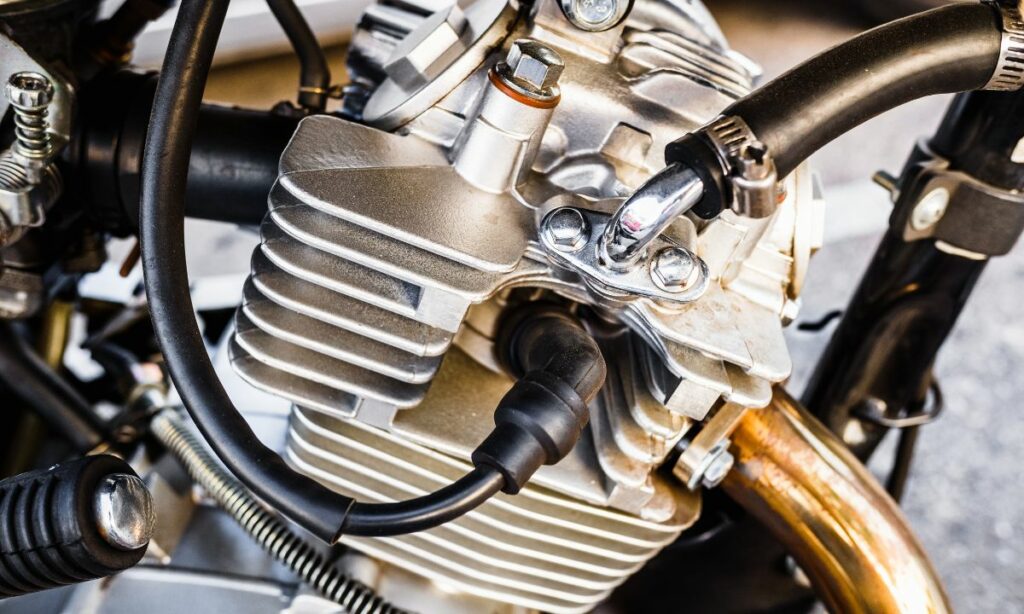
Your motorcycle has the problem of receiving too much gasoline in its engine combustion chamber.
Before trying to fix it, let’s understand why it is bad.
Why flooding is bad
An excessive amount of fuel in the engine is bad because:
First, the motorcycle will run rich.
Running on a rich fuel mixture leads to fuel wastage, low fuel efficiency, and power loss. That’s a sub-optimal usage of the gas.
Second, gas flooding can lead to starting problems.
This is the biggest problem when it comes to engine flooding.
Engine flooding where the gas is in too high amounts invariably leads to starting issues. The engine won’t start at all.
Third, there will be exhaust overheating and backfires.
Engine gas flooding not only affects the engine but also the exhaust components.
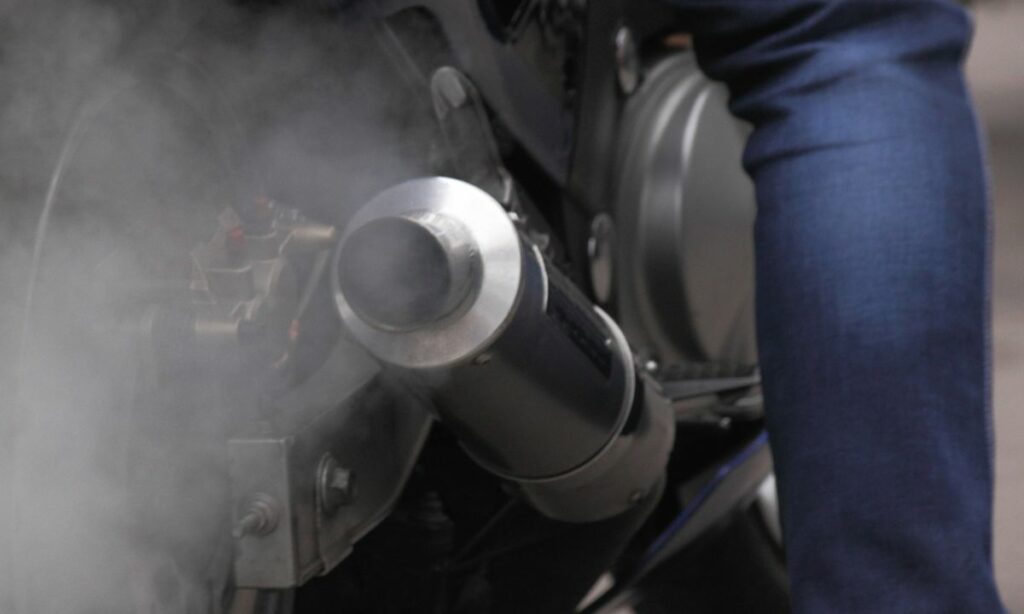
The unburnt fuel detonates within the exhaust. Leading to exhaust overheating and backfire.
How to tell if a motorcycle is flooded
Here are the signs to notice in a motorcycle when its engine is flooded with gas:
First and foremost, the engine cranks but doesn’t start.
If the engine does not start but the crankshaft runs, then that’s the main indicator that there is engine flooding.
Second, there will be a strong fuel smell near the engine.
The second sign is the strong gasoline smell coming from the engine. Check for the gas leaks first. If not, then it is because of gas flooding the engine.
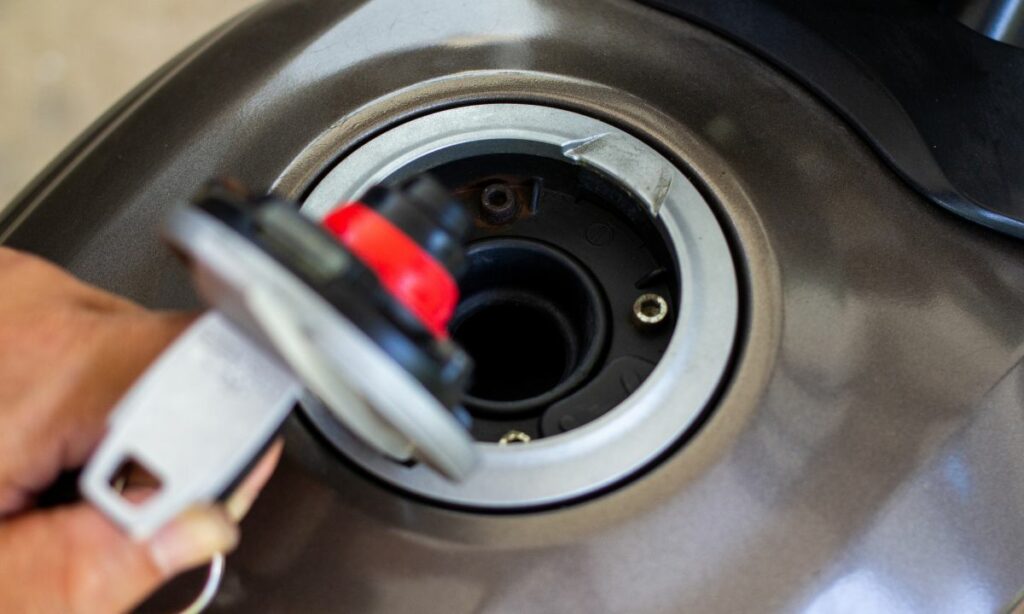
Third, the fuel might leak out of the exhaust.
Excess fuel can leak out of the exhaust when you crank the engine. If small droplets of fuel sprinkle out the exhaust, then the gas is overfilling the engine combustion chamber.
What to do if the motorcycle engine is flooded with gas
Here is a step-by-step guide on what to do when your motorcycle engine si flooded with gas:
Step #1. Leave the motorcycle for half an hour
The first step is to give the motorcycle a break.
Let the bike rest for half an hour. A solid 30 to 40 minutes of rest.
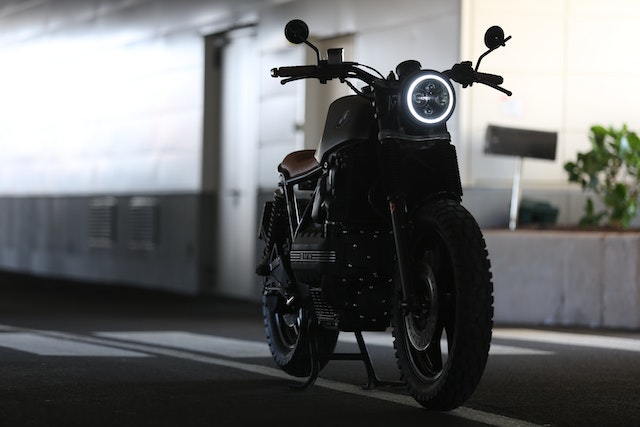
During this time, the fuel which is overfilled in the engine combustion chamber might ease down.
The gasoline can evaporate or escape through the valves.
Thus leading to the fuel level going down in the engine. The flooding will ease up.
You can start the motorcycle now.
But there is no guarantee the fuel will ease down though. In that case, let’s skip to the next step.
Step #2. Cut the fuel flow to the engine
If the motorcycle doesn’t start after resting for half an hour, then you need to follow the below steps.
First, cut the fuel flow to the engine.
How do you do that?
Locate the reserve fuel switch.
Then turn the switch to the OFF position.
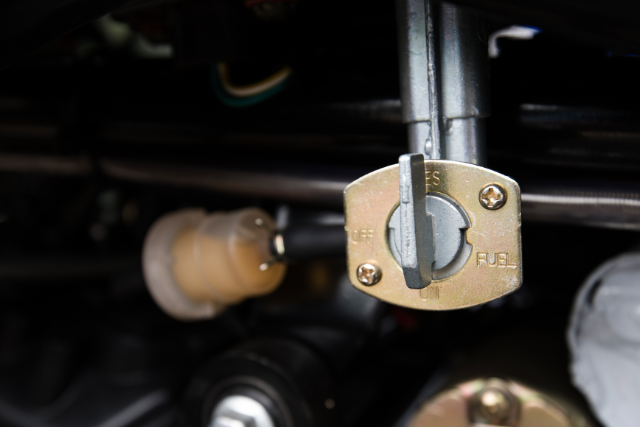
This cuts the fuel flow from the gas tank to the carburetor. And hence the engine.
Step #3. Remove the spark plug
Next, remove the spark plug from the engine.
Take out the spark plug wire.
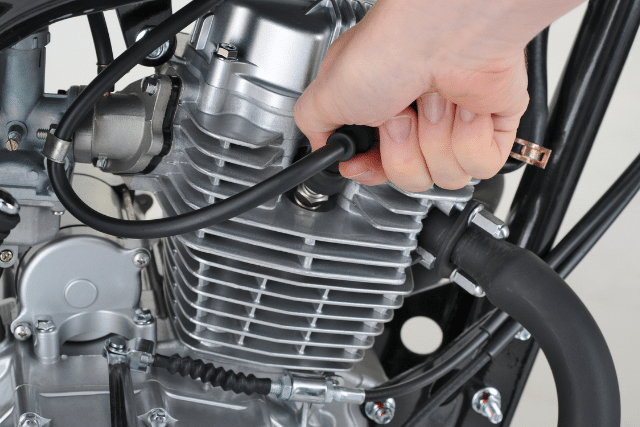
Then use a wrench or a plier to remove the spark plug from the engine.
Step #4. Drain the excess fuel from the combustion chamber
Once you have removed the spark plug, the fuel might flow out if the engine is overfilled with gasoline.
Even if not, the gas might slowly evaporate.
Allow the fuel to drain out from the engine combustion chamber.
You can rest the motorcycle again for another half an hour.
Step #5. Crank the engine to drain faster
To drain the fuel faster, you can crank the engine.
Start kickstarting the motorcycle.

Since there is no spark plug to ignite the fuel, the engine won’t start.
But since the piston moves up and down, the fuel will leak out of the engine.
In this way, the fuel is drained out of the combustion chamber.
Step #6. Fit the spark plug back and turn ON the fuel supply
Now that the fuel is drained, the engine is back to normal now.
It’s time to refit the spark plug back.
Check the spark plug condition. The tip should be clean and not masked with deposits.
Else clean it with a wire brush or use a new spark plug.
Refit the spark plug back to the engine now. And connect the spark plug cable.
Next, turn the reserve fuel switch back to the ON position.
The fuel is flowing to the engine now.
Step #7. Start the motorcycle now
The excess fuel is drained out now.
The engine should start.
Start the motorcycle, preferably with the kickstart.
The motorcycle should be ready to go.
Preventive measures for flooding
While the above fix will start the motorcycle back, the problem might resurface again.
Here are the measures you can take to prevent engine flooding:
- Check for worn-out spark plugs: If the spark plug electrodes are worn-out or masked, either clean them with a wire brush or replace with a new spark plug.
- Choke lever is ON: Keeping the choke on helps during cold starts. But if the choke lever is on for a longer time, the rich fuel mixture makes the engine overfilled with gasoline. So turn the choke OFF.
- Inspect the ignition coil: Faulty ignition system, especially the coil can be the cause of engine flooding. So check the primary and secondary coils and make sure they are in good working condition.
Before you go…
Here are a few more engine related motorcycle problems that might concern you:
